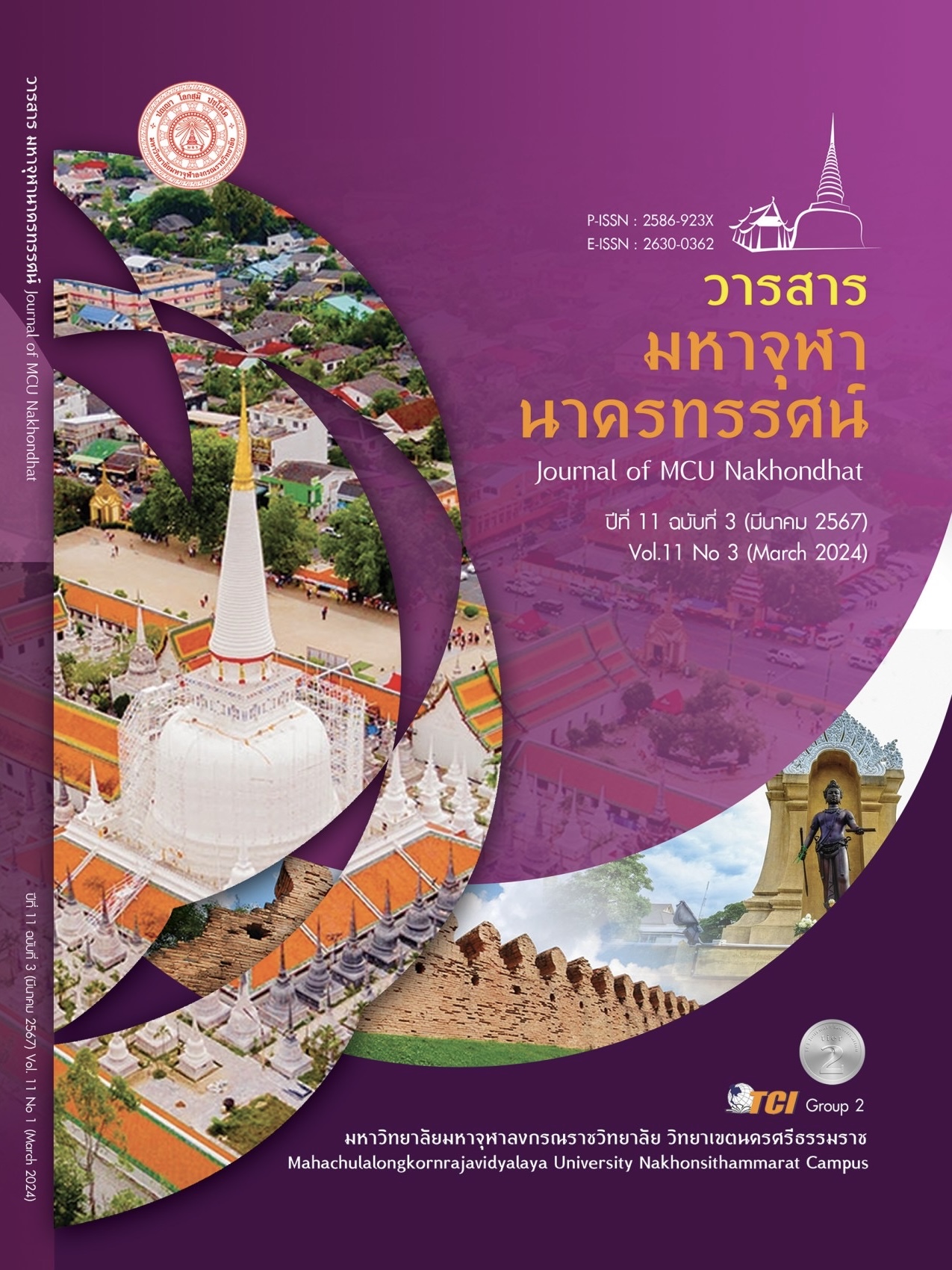ประสิทธิผลรูปแบบการดูแลผู้ป่วยโรคหลอดเลือดสมองที่บ้าน โรงพยาบาลเกาะสมุย
Main Article Content
บทคัดย่อ
การวิจัยมีวัตถุประสงค์เพื่อศึกษาประสิทธิผลรูปแบบการดูแลผู้ป่วยโรคหลอดเลือดสมองที่บ้าน (ความสามารถในการทำกิจวัตรประจำวัน สุขภาพกาย และสุขภาพจิต) เป็นวิจัยกึ่งทดลอง แบบกลุ่มเดียว วัดก่อน - หลัง กลุ่มตัวอย่างเป็นผู้ป่วยโรคหลอดเลือดสมองระยะกลาง ที่ขึ้นทะเบียนศูนย์ดูแลต่อเนื่องในโปรแกรม Smart COC มารักษาที่โรงพยาบาลเกาะสมุย หรือ รพ.สต. เครือข่าย อายุมากกว่า 18 ปี และน้อยกว่า 75 ปี เป็นอัมพาตครึ่งซีกจากโรคหลอดเลือดสมองเป็นครั้งแรก ไม่มีภาวะอ่อนแรง/การเคลื่อนไหวผิดปกติจากโรคระบบประสาทอื่น และยินดีเข้าร่วมศึกษาวิจัย จำนวน 40 คน ได้จากการเลือกตัวอย่างแบบเจาะจง เครื่องมือในการวิจัย ได้แก่ 1) รูปแบบการดูแลผู้ป่วยโรคหลอดเลือดสมองที่บ้าน 2) แบบประเมินความสามารถในการดำเนินชีวิตประจำวันและภาวะสุขภาพ ซึ่งมีค่าความเชื่อมั่นแบบประเมินความสามารถในการดำเนินชีวิตประจำวัน = 0.85 แบบประเมินสุขภาพกาย = 0.71 และแบบประเมินสุขภาพจิต = 0.83 เก็บรวบรวมข้อมูลก่อน และหลังดำเนินการในเดือนธันวาคม 2566 และกุมภาพันธ์ 2567 วิเคราะห์ข้อมูลด้วยสถิติเชิงพรรณนา ได้แก่ จำนวน ร้อยละ ค่าเฉลี่ย ส่วนเบี่ยงเบนมาตรฐาน และ Paired simple T - test ผลการวิจัย พบว่า หลังได้รับรูปแบบการดูแลผู้ป่วยโรคหลอดเลือดสมองที่บ้าน ผู้ป่วยโรคหลอดเลือดสมองมีความสามารถในการทำกิจวัตรประจำวัน และสุขภาพกายดีขึ้นอย่างมีนัยสำคัญทางสถิติ (p - value < 0.001) ส่วนสุขภาพจิต ยังคงเหมือนเดิม (p - value > 0.05) แสดงให้เห็นว่ารูปแบบการดูแลผู้ป่วยโรคหลอดเลือดสมองที่บ้านทำให้เกิดผลดีต่อความสามารถในการทำกิจวัตรประจำวัน และสุขภาพกาย ดังนั้น จึงควรนำรูปแบบการดูแลผู้ป่วยโรคหลอดเลือดสมองที่บ้านไปใช้ที่โรงพยาบาลเกาะสมุย และขยายผลสู่โรงพยาบาลอื่นต่อไป
Article Details

อนุญาตภายใต้เงื่อนไข Creative Commons Attribution-NonCommercial-NoDerivatives 4.0 International License.
เอกสารอ้างอิง
ขจรพรรณ คงวิวัฒน์. (2560). ผลของโปรแกรมพัฒนาพฤติกรรมป้องกันโรคหลอดเลือดสมอง ของผู้ป่วยกลุ่มเสี่ยง จังหวัดกาญจนบุรี. วารสารการพยาบาลและการดูแลสุขภาพ, 35(3), 129-137.
จารุพักตร์ สุขุมาลย์พิทักษ์. (2559). การพัฒนารูปแบบการดูแลผู้ป่วยโรคหลอดเลือดสมองชายในโรงพยาบาลระดับทุติยภูมิโดยใช้วิจัยเชิงปฏิบัติการแบบมีส่วนร่วม. วารสารสมาคมพยาบาลฯ สาขาภาคตะวันออก เฉียงเหนือ, 30(1), 32-47.
ธงชัย กีรติหัตถยากร. (2566). กรมควบคุมโรค รณรงค์วันหลอดเลือดสมองโลก ปี 2566 เผยปีนี้ประเทศไทยพบผู้ป่วยกว่า 3 แสน. เรียกใช้เมื่อ 22 มกราคม 2567 จาก https://www.hfocus.org/content/2023/10/28741
นิจศรี ชาญณรงค์. (2563). รู้เร็วรอด! "หลอดเลือดสมอง" ครองแชมป์สาเหตุผู้สูงอายุ พิการ-เสียชีวิต. เรียกใช้เมื่อ 15 กันยายน 2566 จาก https://www.hfocus.org/content/2020 /10/20381
ปนัดดา ภักดีวิวรรธ. (2561). ปัจจัยทำนายการเคลื่อนไหวร่างกายของผู้ป่วยภายหลังเกิดโรคหลอดเลือดสมองในระยะ 1 ปีแรก. วารสารพยาบาลทหารบก, 2561(19), 185-193.
โรงพยาบาลเกาะสมุย. (2566). จำนวนผู้ป่วยโรคหลอดเลือดสมอง และการเยี่ยมบ้าน. สุราษฎร์ธานี: โรงพยาบาลเกาะสมุย.
ศีล เทพบุตร์. (2563). การพัฒนารูปแบบการดูแลผู้ป่วยโรคหลอดเลือดสมองที่บ้าน. สวรรค์ประชารักษ์เวชสาร, 17(3), 112-124.
สถาบันประสาทวิทยา, ชมรมพยาบาลโรคระบบประสาทแห่งประเทศไทย. (2559). แนวทางการพยาบาลผู้ป่วยโรคหลอดเลือดสมองสำหรับพยาบาลทั่วไป (Clinical Nursing Practice Guideline for Stroke). กรุงเทพมหานคร: ธนาเพรส.
สมศักดิ์ เทียมเก่า. (2565). อุบัติการณ์ โรคหลอดเลือดสมองประเทศไทย. วารสารประสาทวิทยาแห่งประเทศไทย, 39(2), 39-46.
สำนักโรคไม่ติดต่อ กรมควบคุมโรค กระทรวงสาธารณสุข. (2559). รายงานประจำปี 2559. กรุงเทพมหานคร: สำนักงานกิจการโรงพิมพ์องค์การสงเคราะห์ทหารผ่านศึกในพระบรมราชูปถัมภ์.
สุปรีดา มั่นคง และคณะ. (2559). การประเมินประสิทธิผลของโปรแกรมการดูแลผู้ป่วยโรคหลอดเลือดสมองและญาติผู้ดูแลในระยะเปลี่ยนผ่านจากโรงพยาบาลสู่บ้าน. วารสารพยาบาลสาธารณสุข, 30(3), 84-101.
หทัย พันธ์พงษ์วงศ์. (2559). การดูแลผู้สูงอายุที่มีภาวะพึ่งพิงของทีมหมอครอบครัว โรงพยาบาลส่งเสริมสุขภาพตำบล จังหวัดสมุทรสงคราม. สมุทรสงคราม: โรงพยาบาลส่งเสริมสุขภาพตำบล จังหวัดสมุทรสงคราม.
อรรถสิทธิ์ ศรีสุบัติ และคณะ. (2562). ต้นทุน-ประสิทธิผลของการดูแลผู้ป่วย โรคหลอดเลือดสมองหลังระยะเฉียบพลัน ด้วยรูปแบบการดูแลระยะกลางแบบผู้ป่วยใน (intermediate care) เปรียบเทียบกับการ ฟื้นฟูสมรรถภาพแบบผู้ป่วยนอก. วารสารกรมการแพทย์, 2562(44), 167-173.
อวยพร จงสกุล และคณะ. (2563). รูปแบบการจัดการการดูแลผู้ป่วยหลอดเลือดสมองเพื่อฟื้นฟูความสามารถในการปฏิบัติกิจวัตรประจำวัน โรงพยาบาลพหลพลพยุหเสนา : OIMCCE Model. วารสารแพทย์เขต 4-5, 39(3), 454-471.
Bisaillon, et al. (2014). Bringing innovation to stroke care: development of a comprehensive stroke unit. AXON/ L’AXONE, 25(4), 12-27.
Cohen J. (1988). Statistical power analysis for the behavioral sciences. Hillsdale NJ: Lawrence Erl¬baum Associate.
Rand D. & Eng J. J. (2015). Predicting daily use of the affected upper extremity 1 year after stroke. J Stroke Cerebrovasc Dis, 24(2), 274-283.


